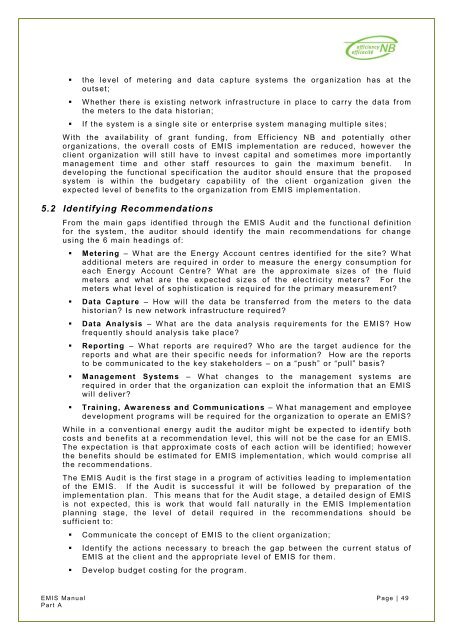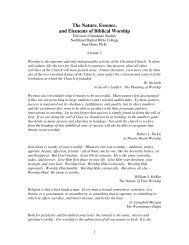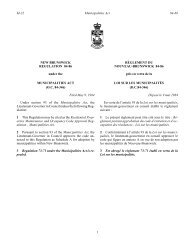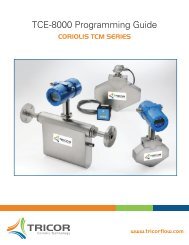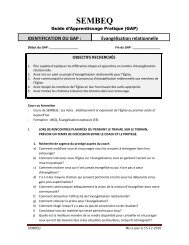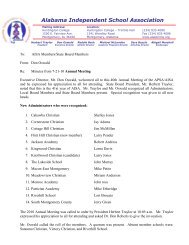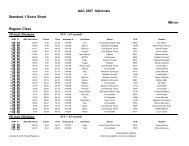The EMIS Audit
The EMIS Audit
The EMIS Audit
Create successful ePaper yourself
Turn your PDF publications into a flip-book with our unique Google optimized e-Paper software.
� the level of metering and data capture s ystems the organization has at the<br />
outset;<br />
� W hether there is existing network infra structure in place to carry the data from<br />
the meters to the data historian;<br />
� If the s ystem is a single site or enterprise s ystem managing multiple sites;<br />
W ith the availability of grant funding, from Efficienc y NB and potentially other<br />
organizations, the overall costs of <strong>EMIS</strong> implementation are reduced, however the<br />
client organization will still have to invest capital and sometimes more importantly<br />
management time and other staff resources to gain the maximum benefit. In<br />
developing the functional specificati on the auditor should ensure that the proposed<br />
system is within the budgetary capability of the client organization given the<br />
expected level of benefits to the organization from <strong>EMIS</strong> implementation.<br />
5.2 Identifying Recommendations<br />
From the main gaps identified through the <strong>EMIS</strong> <strong>Audit</strong> and the functional definition<br />
for the s ystem, the auditor should identif y the main recommendations for change<br />
using the 6 main headings of:<br />
� Metering – W hat are the Energy Account centres identified for the site? W hat<br />
additional meters are required in order to measure the energy consumption for<br />
each Energy Account Centre? W hat are the approximate sizes of the fluid<br />
meters and what are the expected sizes of the electricity meters? For the<br />
meters what level of sophistication is require d for the primary measurement?<br />
� Data Capture – How will the data be transferred from the meters to the data<br />
historian? Is new network infrastructure required?<br />
� Data Analysis – W hat are the data analysis requirements for the <strong>EMIS</strong>? How<br />
frequently should analysis take place?<br />
� Reporting – W hat reports are required? W ho are the target audience for the<br />
reports and what are their specific needs for information? How are the reports<br />
to be communicated to the key stakeholders – on a “push” or “pull” basis?<br />
� Management Systems – W hat changes to the management systems are<br />
required in order that the organization can exploit the information that an <strong>EMIS</strong><br />
will deliver?<br />
� Training, Aw areness and Communications – W hat management and employee<br />
development programs will be required for the organization to operate an <strong>EMIS</strong>?<br />
W hile in a conventional energy audit the auditor might be expected to identify both<br />
costs and benefits at a recommendation level, this will not be the case for an <strong>EMIS</strong>.<br />
<strong>The</strong> expectation is that approximate costs of each action will be identified; however<br />
the benefits should be estimated for <strong>EMIS</strong> implementation, which would comprise all<br />
the recommendations.<br />
<strong>The</strong> <strong>EMIS</strong> <strong>Audit</strong> is the first stage in a program of activities leading to implementation<br />
of the <strong>EMIS</strong>. If the Aud it is successful it will be followed by preparation of the<br />
implementation plan. This means that for the <strong>Audit</strong> stage, a detailed design of <strong>EMIS</strong><br />
is not expected, this is work that would fall naturally in the <strong>EMIS</strong> Implementation<br />
planning stage, the level of detail required in the recommendations should be<br />
sufficient to:<br />
� Communicate the concept of <strong>EMIS</strong> to the client organization;<br />
� Identify the actions necessary to breach the gap between the current status of<br />
<strong>EMIS</strong> at the client and the appropriate level of <strong>EMIS</strong> for them.<br />
� Develop budget costing for the program.<br />
<strong>EMIS</strong> Ma nu al Page | 49<br />
Part A


